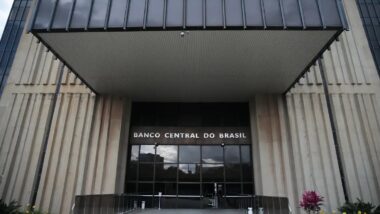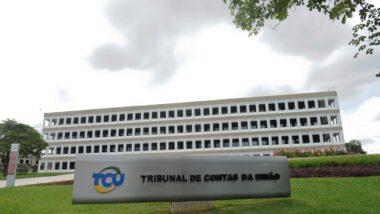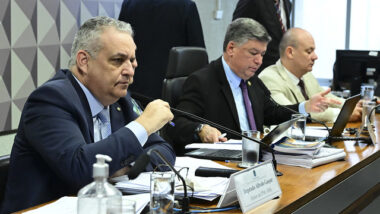
Over the past ten years, the Judiciary system has only managed to convict one individual for every 23 homicides committed in Curitiba. According to the statistics of the Secretary for Public Safety of the State of Paraná, 5,806 homicides were committed in Curitiba since 2004. The total number of convictions, according to the study carried out by the Jury Tribunal Court of Curitiba, was of 247 at the beginning of July 2013. It represents 4.17% of the cases. The final result is lower than the national median which is found between 5% and 8%, according to the study carried out by the Brazilian Association of Criminality in 2011.
The number of convictions in Curitiba could still rise, especially those of the most recent cases as trials for this type of crime usually comes later. However, one can see that the conviction rate is low even for the most ancient cases. Ten years later, for example, there are 25 cases with final convictions resulting from homicides committed in 2003. That year, there were 612 murdered recorded in Curitiba, according to the Map the Violence program. A decade later, the conviction rate is of only 4%.
FlagrantsMost convictions were found in cases which had flagrant or in in which police was able to quickly identify the author. Cases which required a deeper investigation represent less than half the convictions issued in Curitiba over the last ten years.
According to the survey carried out by the Jury Trial Court of Curitiba, out of the 247 convictions referring to homicides committed between 2004 and 2013, 147 were cases investigated by district police squads. According to the current division, these squads are only handed cases when the author of the crime is known from the beginning. On the other hand, the Homicide Unit is in charge of investigating homicides whose authors are unknown. These inquiries resulted in 107 convictions, which amount to 43.3% of the total number of convictions over this time lapse.
The statistics of Gazeta do Povo confirm the National Strategic Group for Public Safety (ENASP). According to the ENASP document, "nearly every crime solved was flagrant or received consistent media coverage."
Study CaseThe murder of Mauro Justino Ramos shows that impunity is lower when the investigation starts quickly. The crime was committed on April 10th. The police set up the inquiry that same day. An individual had already been put in custody. A month later, the investigation was completed and the Public Prosecutor Office requested a trial. The suspect was convicted in 2010 and received a 12 year jail sentence.
Persistence changes a scenario of indiference
Environmental engineer Célia Maia has forgotten how many times she visited the Homicide Unit in Curitiba. She also forgot how many times she left station with her eyes full of tears. "I had the feeling that I was talking to walls," she says. Her first visit took place on October 4th, 2010, three days after the death of her son Matheus Hoepers, 17 years old, murdered in Uberaba. Célia had no clue over what had happened and believed that the unit would come up with answers. To her surprise, the police was unaware of the crime.
"I was struck by the negligence." The doubts surrounding the crime led her to visit the unit on a weekly basis. Her will to honor the dignity of her son pushed her not to give up despite the indifference of many.
The investigation slowly made some progress. The police collected footage from a security camera showing a Ford Ecosport coming near Matheus. In January 2011, Justice ordered a jail sentence for a suspect, a woman had previously had a relationship with the dads victim but denied the crime.
The investigation happened to slow down. The suspect was released and the material took months to be analyzed. A new personneland police chief were handed the case. Célia became desperate. "I realized that an investigation is not like going to the bakery to buy some bread. You don´t show up at the counter, buy and leave. But it cannot stay without advancements, it requires endeavor," says the mother.
TracksAfter hearing several times that "there were not enough officers to investigate", the mother decided to start investigating and find evidence herself to be brought to the police. She distributed business cards with her telephone number around the streets of the city and launched a blog so that people who knew something about the crime could get in touch with her. She sent the security camera footage to the United States as an attempt to identify the plate number of the Ecosport.
Her efforts found echoes in the local press and she received an expected phone call. "The following day, the police called me saying they were going to reopen the case. They had never called me." The computer and cell phone seized from the suspect in January were analyzed. New elements were found: a man close to the suspect received phone calls from someone located near the crime scene. The investigation was now heading in the right direction.
After joining several witness statements to the 800-page inquiry, the investigations concluded as four individuals were denounced. The request was accepted by the Public Prosecutor Office. The Judiciary, however, only accepted the charges against one of them. The case was handed to the Jury Trial Court and is now in the witness hearing phase.
As the outcome is getting closer, Célia feels a little bit relieved. "It has been three years that I have not seen my son, but at least I feel like I did my duty as a mother." Célia never needed to visit the police station again. She is now in her way to the Jury Tribunal Court.
Collaborated to this article: Simon Benoit-Guyod, Maicon Joaquim Gomes, Larissa Fanes, Renata Silva Pinto, Bruna Martins, Vitoria Peluso, Victor Turezo, Vivane Menosso and Bruna Teixeira.



